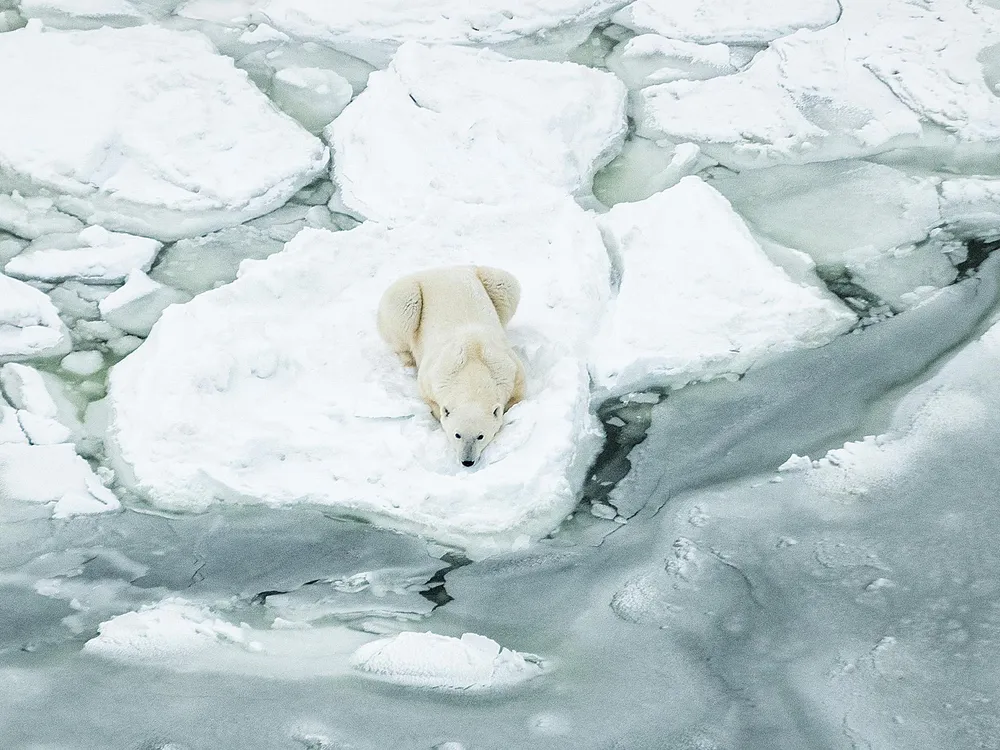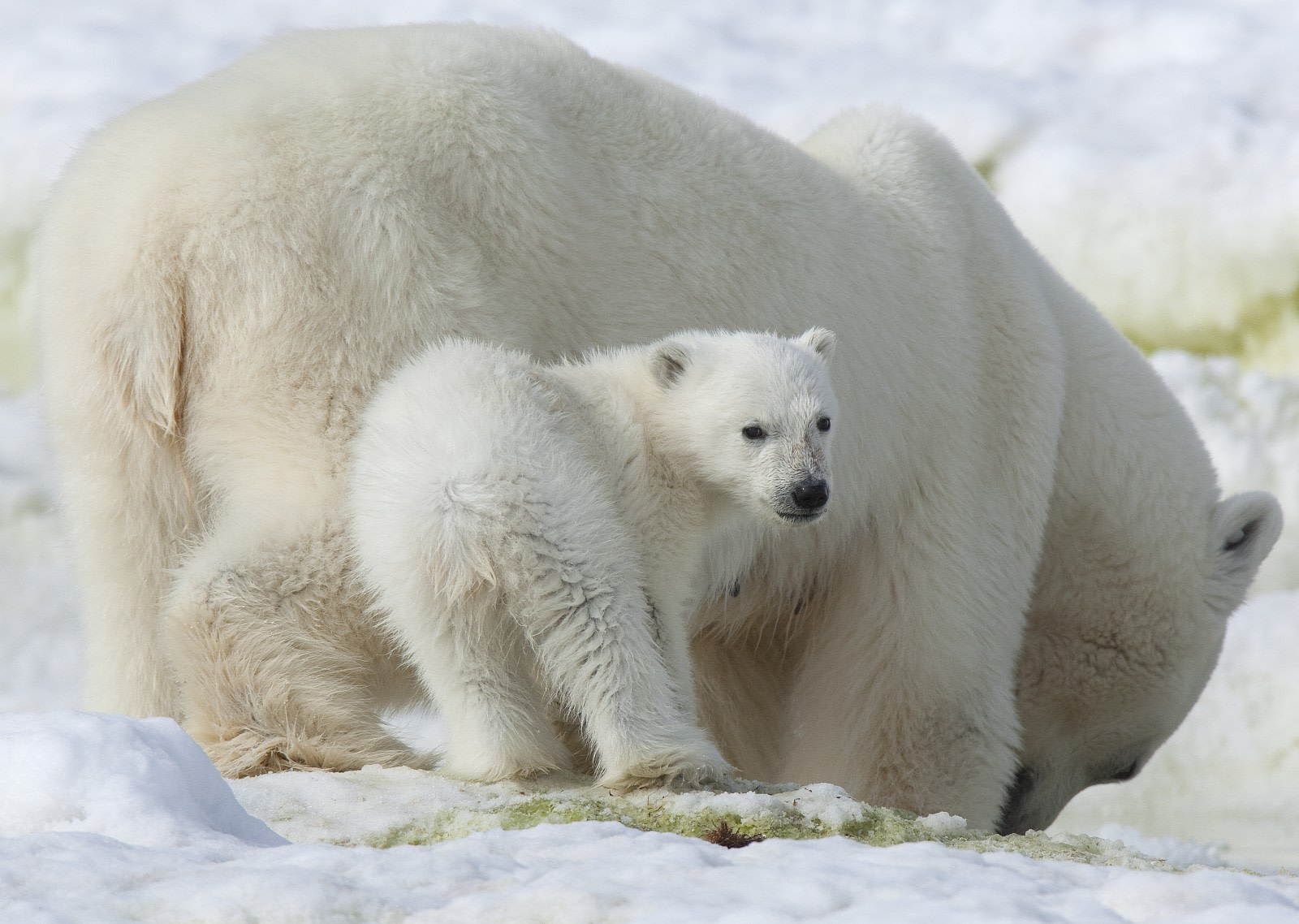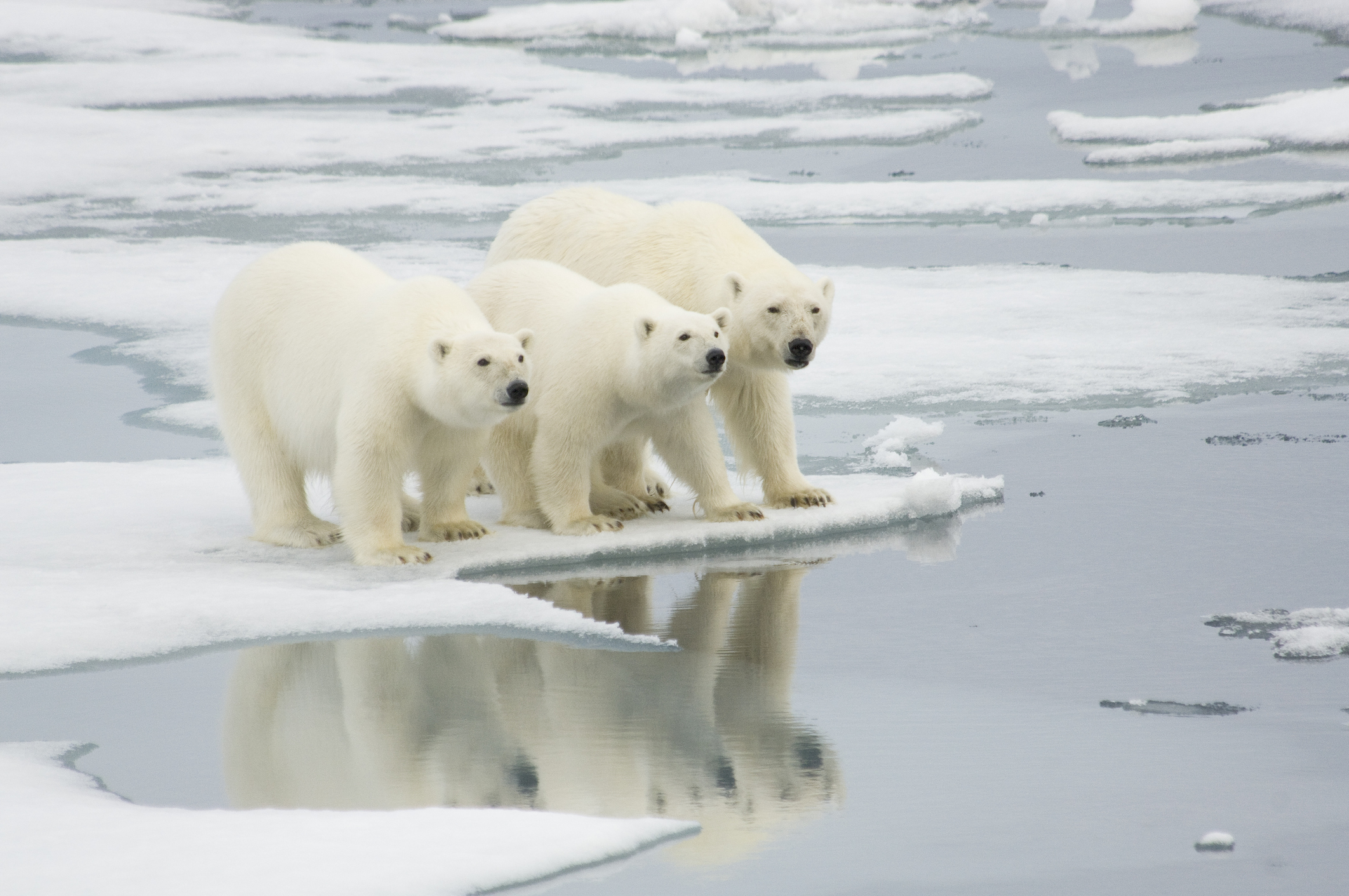Why Do Polar Bears Need Ice to Survive?

Polar bears are magnificent creatures that are associated with the icy landscapes of Arctic regions. Their survival is closely linked to the presence of sea ice, which is rapidly melting due to climate change. In this article, we will explore why polar bears need ice to survive and the implications of losing their habitat.
The importance of sea ice for polar bears

Hunting and feeding habits
Polar bears are apex predators that feed mainly on seals. They hunt by waiting at breathing holes in the ice or stalking seals on the ice surface. Sea ice provides a platform for hunting and travel over vast distances. Without it, polar bears would face significant challenges in catching prey and maintaining their energy levels.
Furthermore, sea ice acts as a “refrigerator” for polar bear food. By storing excess kills in the snow and ice, polar bears are able to preserve their food sources and have access to them during times when hunting is not possible.
Breeding and denning
Sea ice also plays a crucial role in polar bear breeding and denning. Female polar bears build maternity dens in snowdrifts on the sea ice. These dens protect the cubs from harsh winds and temperatures, ensuring their survival during the first few months of life.
Moreover, adult male polar bears may also use sea ice as a way to interact with females during the breeding season. Without sea ice, these interactions may become less frequent, reducing the chances of successful breeding.
Impacts of sea ice loss
The loss of sea ice has severe consequences for polar bears. As the ice melts, polar bears are forced to swim longer distances to reach their hunting grounds, exhausting their energy reserves. Furthermore, the lack of sea ice means that polar bears have fewer areas to build maternity dens, leading to reduced cub survival rates.
Studies show that the loss of sea ice is already affecting polar bear populations in some regions, with declines in body condition and reproductive success. As climate change continues to cause sea ice loss, the survival of polar bears becomes increasingly uncertain.
The role of polar bears in Arctic ecosystems

Keystone species
Polar bears are considered a keystone species in the Arctic ecosystem. This means that they play a crucial role in maintaining the balance and health of their environment. By preying on seals, polar bears help regulate their populations, preventing them from overgrazing on important prey species such as fish.
Furthermore, polar bears also serve as an indicator species for the health of the entire Arctic ecosystem. Their decline in numbers or health can signal wider ecological problems, including changes in ocean chemistry and food web dynamics.
Biodiversity and ecosystem function
Polar bears are not the only species impacted by the loss of sea ice. Many other Arctic species, such as walruses and ringed seals, also rely on sea ice for breeding, hunting, and resting. Without sea ice, these species are forced to adapt or face extinction.
The loss of these species can have significant impacts on Arctic ecosystem functioning, reducing biodiversity and altering nutrient cycles. These changes can then have knock-on effects for global climate regulation and human well-being.
Human impacts
In addition to ecological impacts, the loss of polar bears and other Arctic species can also have significant social and economic consequences. Many Indigenous communities in the Arctic rely on subsistence hunting of animals like seals and whales to sustain themselves and maintain cultural traditions.
Furthermore, polar bears are a major tourism draw in many Arctic regions, generating significant revenue for local communities. The loss of these charismatic creatures could have severe economic impacts on these communities, further exacerbating poverty and inequality.
Climate change and sea ice loss
Causes of sea ice loss
The primary cause of sea ice loss in the Arctic is climate change. As global temperatures continue to rise, the Arctic is experiencing more frequent and intense warming events, leading to rapid melting of sea ice. The loss of sea ice then exacerbates climate change, as less ice means less reflection of solar radiation and more absorption of heat by the ocean.
Furthermore, human activities such as fossil fuel burning, deforestation, and industrial agriculture are also contributing to climate change, making it a complex and multifaceted problem.
Mitigating sea ice loss
While the loss of sea ice is a significant challenge, there are actions that individuals and societies can take to mitigate its impacts. One key strategy is to reduce greenhouse gas emissions, either through personal lifestyle changes or policy interventions at the national and international levels.
Additionally, promoting sustainable tourism practices in Arctic regions can help support local communities while also raising awareness of the importance of preserving natural habitats like sea ice. Finally, supporting conservation efforts for polar bears and other Arctic species can help maintain biodiversity and ecosystem functioning in the face of climate change.
Frequently Asked Questions ### Q1: How do polar bears survive in the summer when there is no sea ice?
A: While polar bears rely heavily on sea ice for hunting and denning, they are also capable of adapting to changing conditions. During the summer months when sea ice melts, polar bears may fast for several weeks or switch to alternative food sources such as berries, eggs, or even small mammals. However, these alternatives are not enough to sustain them long-term and their health can suffer if they don’t have access to enough nutritious food.
Q2: Can polar bears swim long distances in open water?
A: Yes, polar bears are excellent swimmers and can cover long distances in open water. However, swimming is a highly energy-intensive activity that can exhaust the bears and make them vulnerable to predators or boats. As sea ice loss continues, polar bears are being forced to swim longer distances to reach their hunting grounds, putting additional stress on their already vulnerable populations.
Q3: Are polar bears endangered?
A: Yes, polar bears are listed as a vulnerable species by the International Union for Conservation of Nature (IUCN). Their populations have declined significantly in some regions due to habitat loss and other threats such as hunting and pollution. However, conservation efforts such as reducing greenhouse gas emissions and protecting critical habitats like sea ice can help stabilize their populations and ensure their survival.
Q4: What can individuals do to help polar bears?
A: Individuals can take action to reduce their carbon footprint by making lifestyle changes such as driving less, eating a plant-based diet, and using renewable energy sources. Additionally, supporting organizations that work to protect polar bear habitats and reduce human-wildlife conflicts can make a difference. Finally, learning more about polar bears and sharing information with others can help raise awareness about their importance and the challenges they face.
Q5: What is the biggest threat facing polar bears today?
A: Climate change and sea ice loss are the biggest threats facing polar bears today. As temperatures continue to rise, the Arctic is experiencing more frequent and intense warming events, leading to rapid melting of sea ice. This loss of habitat is making it increasingly difficult for polar bears to find adequate food, breed, and survive in their natural environment.
Conclusion
In conclusion, polar bears need sea ice to survive. From hunting and breeding to regulating ecosystems and supporting local communities, the presence of sea ice is critical for the health and well-being of these magnificent creatures. However, climate change and human activities are rapidly causing sea ice loss, putting the survival of polar bears and other Arctic species at risk. It is up to individuals, organizations, and governments to take action to reduce greenhouse gas emissions, protect critical habitats, and promote sustainable practices that can help mitigate the impacts of climate change on polar bears and the fragile Arctic ecosystem.